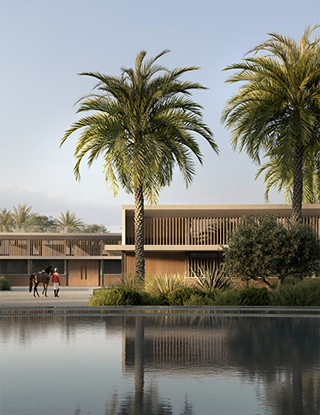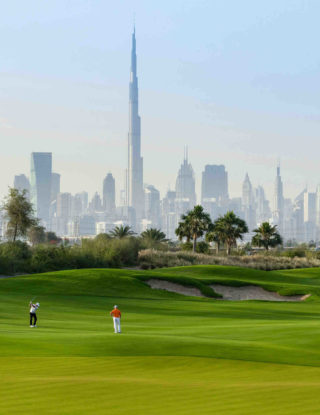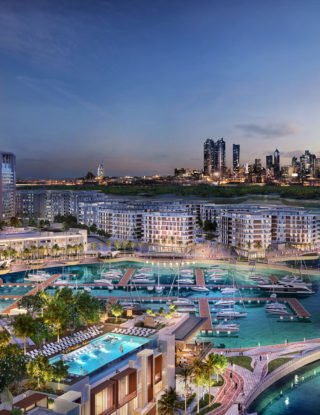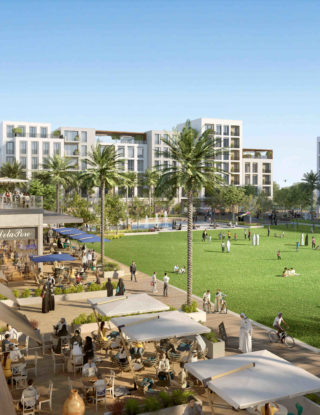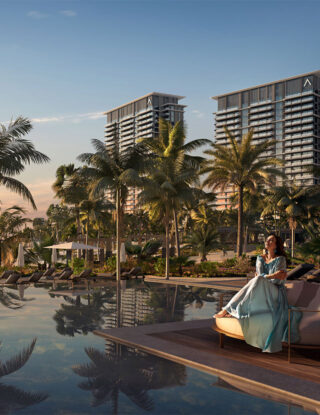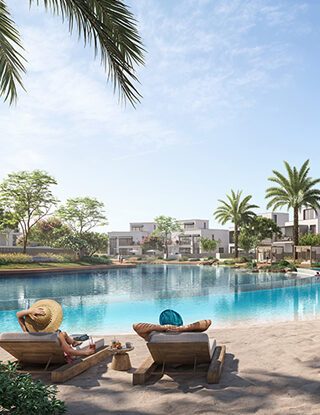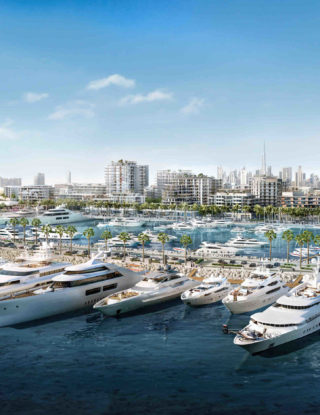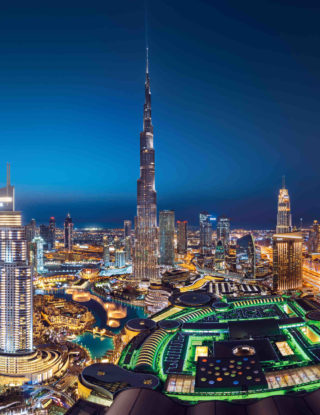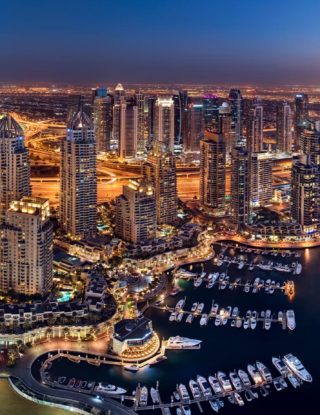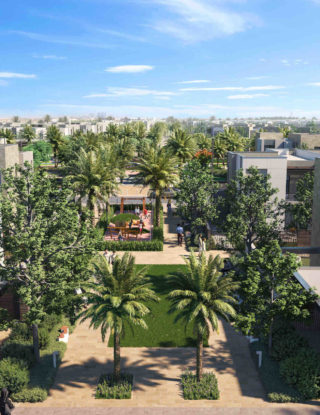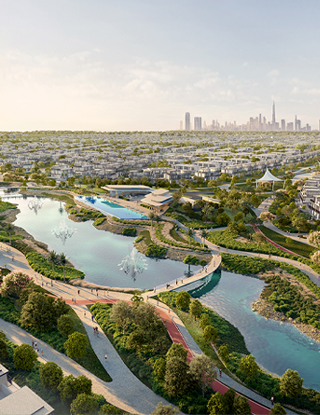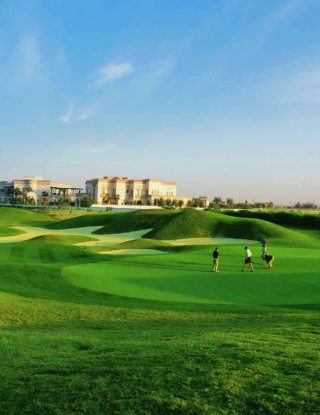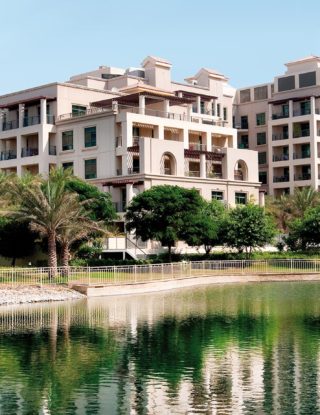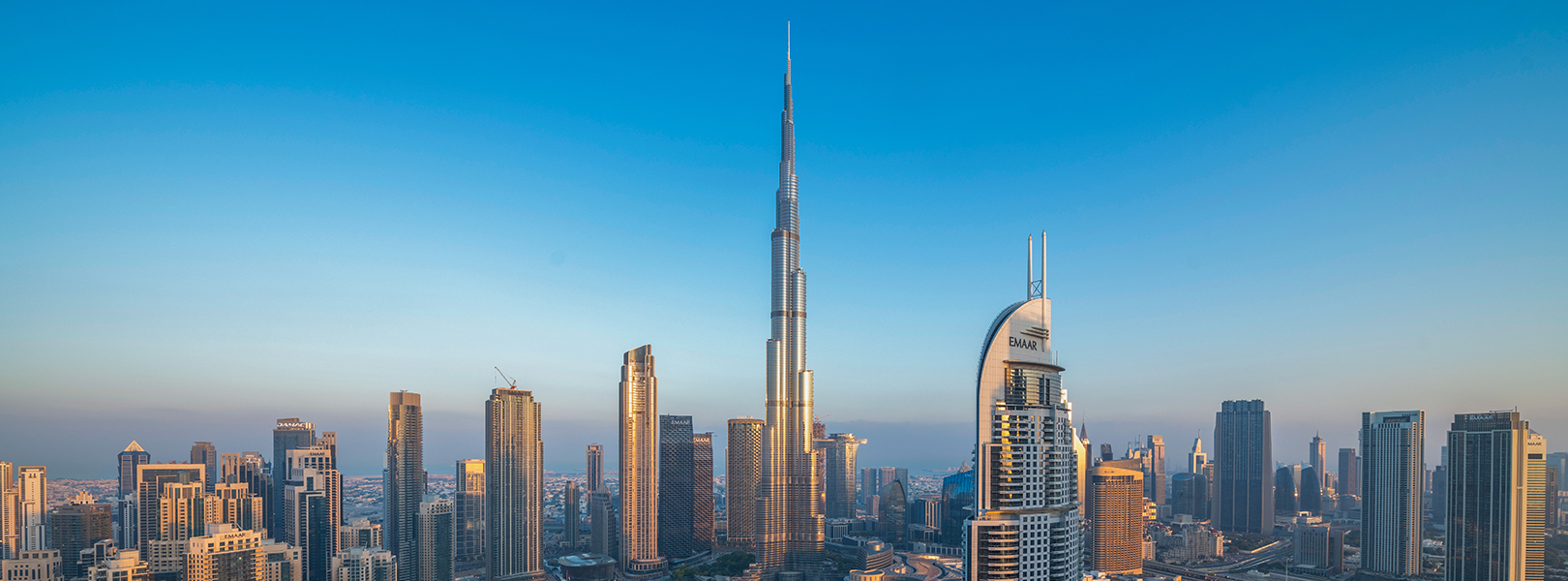Burj Khalifa
Discover Burj Khalifa – The World's Tallest Building
A global icon and a triumph of contemporary engineering, Burj Khalifa is more than the tallest building on Earth. It is a vertical city that captures the spirit of Dubai’s bold vision. Rising 828 metres into the sky, this architectural masterpiece redefines the city's skyline and symbolises its boundless aspirations.Records That Redefine Possibility
Developed by Emaar Properties, Burj Khalifa holds numerous world records, including:- Tallest building on the planet
- Tallest free-standing structure
- Highest number of storeys in the world’s tallest freestanding structure
- Highest occupied floor in the world
- Highest outdoor observation deck in the world
- Elevator with the longest travel distance in the world
- Tallest service elevator in the world
- World Highest Lounge
Historical Context and Construction Details
Burj Khalifa was officially unveiled to the world on January 4, 2010, solidifying its status as the world's tallest building and cementing Dubai’s status as a global hub of excellence. More than a towering landmark — it is a symbol of aspiration, structural innovation, and artistic vision.Architecture & Design
Burj Khalifa was masterfully designed by the Chicago-based architectural firm Skidmore, Owings & Merrill LLP (SOM), renowned for pioneering ultra-tall structures. Led by consulting design partner Adrian Smith, FAIA, RIBA. Inspired by Islamic architecture, its design is rooted in a harmonious Y-shaped floor plan, signifying unity and structural strength. Every phase of its creation, from the groundbreaking foundations embedded deep within the desert to the soaring structure that grew floor by floor, reflects precision, innovation, and ambition.Interior Design
The interiors, designed by Nada Andric in collaboration with SOM, balance modern elegance with cultural heritage. Materials like glass, stainless steel, dark stone, silver travertine, and Venetian stucco create an atmosphere of refined luxury and comfort.Art Collection
Over 1,000 artworks by leading Middle Eastern and international artists are displayed throughout the tower and Mohammed Bin Rashid Boulevard. Pieces like Jaume Plensa’s “World Voices” celebrate global harmony and the building’s international spirit.Things to Do Near Dubai Burj Khalifa
Burj Khalifa‘s height, reaching an impressive 828 metres, is complemented by its 163 floors that are home to premium offices, luxurious hotels, world-class restaurants, and exclusive residences. The uppermost floors are dedicated to observation decks, providing panoramic views of Dubai. Notable features include a swimming pool on the 76th floor and a mosque on the 158th floor, both of which are the highest in the world. The Armani Dubai Hotel, housed within Burj Khalifa, is the highest hotel globally. Additionally, the Burj Khalifa Sky Lounge offers a bar and restaurant experience with breathtaking vistas.Visitor Information
Tickets for the observation decks can be purchased online or at the venue. “At The Top” experiences start at level 124 and 125, with VIP access to level 148. The attraction operates daily from 8:30 AM to midnight, ensuring flexibility for tourists to enjoy the views at different times of the day. Burj Khalifa is the tallest structure in the world, standing at 2,716.5 feet (828 metres) and holding its record-breaking status since its completion in 2010. Residing in Burj Khalifa offers an unmatched lifestyle. Residents enjoy stunning views, direct access to Dubai Mall—the world’s most visited shopping and entertainment destination—and Dubai Fountain, the world’s largest dancing fountain. The building’s design, inspired by Islamic architecture, features a tripartite floor plan and a buttressed core, enhancing both its aesthetic appeal and structural integrity. Burj Khalifa, like other tall buildings, presents unique architectural design and engineering challenges, showcasing advancements in materials and construction techniques. Comparing Burj Khalifa with other iconic structures like the Willis Tower and the World Trade Center highlights its architectural significance and the evolution of skyscraper design.Cultural Significance
Drawing inspiration from the architectural and safety innovations of historic skyscrapers in New York City, Burj Khalifa is not just a record-breaking skyscraper in Dubai, it represents a new era of modern engineering and urban ambition. As a global icon, the Burj Khalifa attracts millions of visitors annually and frequently features in international films and media. Technological breakthroughs in high-rise construction have made such feats possible following in the footsteps of landmarks like the Petronas Twin Towers, which once held the title of the world’s tallest buildings in the late 1990s. These pioneering structures continue to influence architectural design.Things to Do Near Dubai Burj Khalifa
Surrounding Burj Khalifa is a world of iconic attractions, experiences, and restaurants. Watch the Dubai Fountain's dazzling water shows on the 30-acre Burj Lake—every 30 minutes from 6 PM to 11 PM—or enjoy it from a traditional abra or floating boardwalk. Nearby, Dubai Opera hosts a vibrant calendar of world-class performances, from operas and ballets to concerts and musicals. For shopping and entertainment, Dubai Mall offers over 1,200 stores, high fashion at Fashion Avenue, global dining, and must-see attractions like the Dubai Aquarium & Underwater Zoo. For panoramic thrills, head to Sky Views Observatory at Address Sky View Hotel, where you can ride a glass elevator, walk a 46-metre transparent floor, and take on the Glass Slide and Edge Walk Complete your visit with a memorable meal—whether it's French fine dining at Atmosphere on the 122nd floor, Italian flair at Armani/Ristorante, bold Indian flavours at Armani/Amal, or relaxed international dishes at Armani/Mediterraneo. For a more casual setting, unwind at Armani/Lounge with afternoon tea and skyline views. For a cultural experience, Cross the bridge from Dubai Mall to Souk Al Bahar, a contemporary take on a traditional Arabian market filled with boutiques, local crafts, and waterfront views. Hop on a traditional abra ride or unwind while kids explore the play area. Just steps away, Time Out Market is an epicurean haven, showcasing 17 of Dubai’s top chefs and homegrown concepts. With diverse kitchens, curated beverages, and a scenic terrace, where culinary excellence meets cultural flair. For a grand finale, catch a world-class performance at the iconic Dubai Opera—Dubai’s cultural crown jewel.Visitor Information
Getting to Burj Khalifa
A visit to Burj Khalifa in Dubai is an unforgettable journey to the top of the world. Centrally located in Downtown Dubai, Burj Khalifa is easily reached via the Dubai Metro (Red Line to Burj Khalifa/Dubai Mall Station), RTA bus routes F13 and 27, or ride-hailing services like Uber and Careem. Drivers can access ample parking. Open daily from 8:30 AM to midnight, these experiences can be enjoyed at sunrise, in daylight, or night. At The Top, Burj Khalifa tickets are available online at ticket.atthetop.ae or at the venue, with options varying by time and level of access. For the latest Burj Khalifa booking details, including At the Top, Burj Khalifa prices, timings, combo packages and special offers, visit the official site .
AT THE TOP
Discover breathtaking views and unmatched luxury at At the Top, Burj Khalifa, located on level 125 and 124 at a staggering height of 456 metres. This world-renowned observation deck offers 360-degree panoramic views that stretch far beyond the city skyline. The outdoor terrace provides a thrilling open-air experience, while the exclusive SKY lounge delivers comfort and elegance. Guests can also visit Levels 148, where At the Top, Burj Khalifa continues with immersive displays, interactive viewing telescopes, and another scenic outdoor terrace. For those planning a visit tickets are available for both standard and SKY access levels—offering something extraordinary for every visitor.
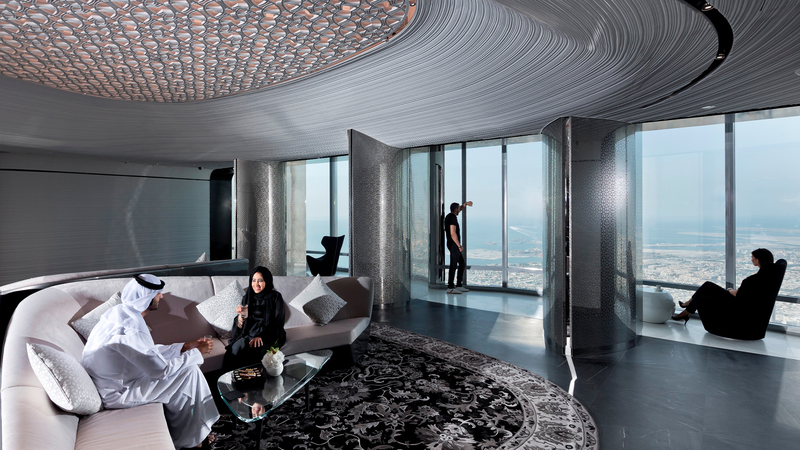
The VIP Lounge
Enjoy the pinnacle of sky-high indulgence at The Lounge, Burj Khalifa, set across levels 152, 153, and 154—the world’s highest lounge, holding a Guinness World Record at an astounding 585 metres above ground. Savour a glass of bubbly or a premium house beverage alongside gourmet canapés, while multilingual guides enrich your visit with fascinating insights into the tower’s history and architecture. With its modern design, ambient lighting, and floor-to-ceiling windows, The Lounge is the perfect retreat from the crowds, ideal for celebrating a special occasion or simply treating yourself to a once-in-a-lifetime view. The Lounge tickets at Burj Khalifa can be booked online for a seamless, elevated experience.
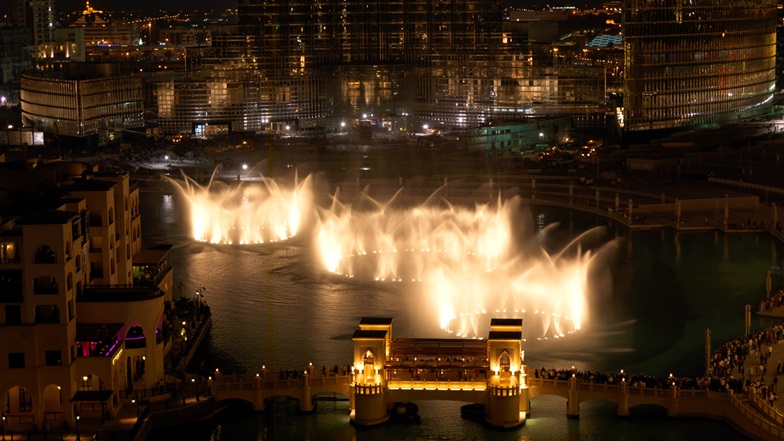
Dubai Fountain
Experience the allure of Dubai Fountain, the world’s largest choreographed water display, set on the serene Burj Lake. Spanning over 900 feet, the performance features dynamic water jets soaring up to the height of a 50-storey tower, synchronised to a curated selection of international music. Get a closer perspective aboard a traditional abra boat, or walk along the floating boardwalk for an intimate encounter with this architectural and artistic marvel. With its harmonious interplay of sound, movement, and light, the show offers a compelling sensory experience every evening at regular intervals.
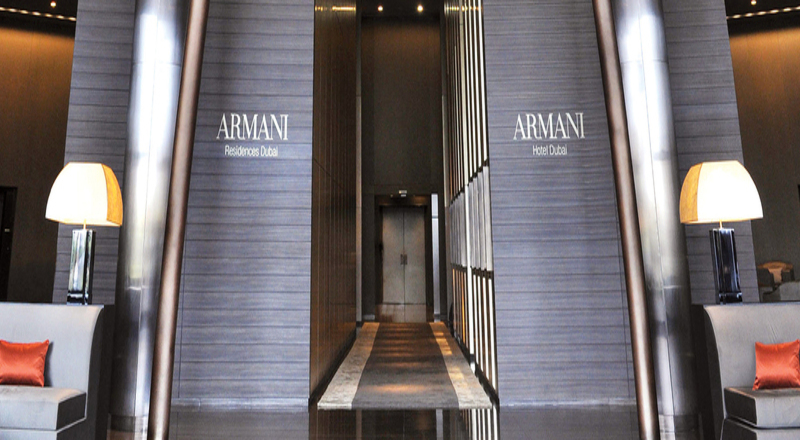
Armani Dubai Hotel
Soaring within the iconic Burj Khalifa, Armani Hotel Dubai is the world’s first hotel designed by Giorgio Armani—a seamless fusion of Italian elegance and Arabian hospitality. Spanning eleven floors, it offers 160 luxurious guest rooms and suites, seven world-class restaurants, an exclusive spa, and stylish venues for events and celebrations. Every detail in this hotel in Burj Khalifa embodies Armani’s signature minimalist style, with bespoke Armani/Casa furnishings, soft lighting, and rich textures creating an atmosphere of quiet sophistication. Floor-to-ceiling windows frame breathtaking views of the Dubai skyline, while intuitive service and personalised experiences ensure each stay is as refined as it is unforgettable.

Sustainability
Emaar’s visionary development of Burj Khalifa not only pushed the boundaries of architectural innovation but also set new standards in environmental responsibility. Burj Khalifa, the world’s tallest building, has achieved LEED Platinum certification under the v4.1 Operations and Maintenance: Existing Buildings rating system by the U.S. Green Building Council. This prestigious recognition highlights Emaar’s commitment to sustainability, with eco-friendly practices seamlessly integrated into the tower’s design, construction, and operations.
